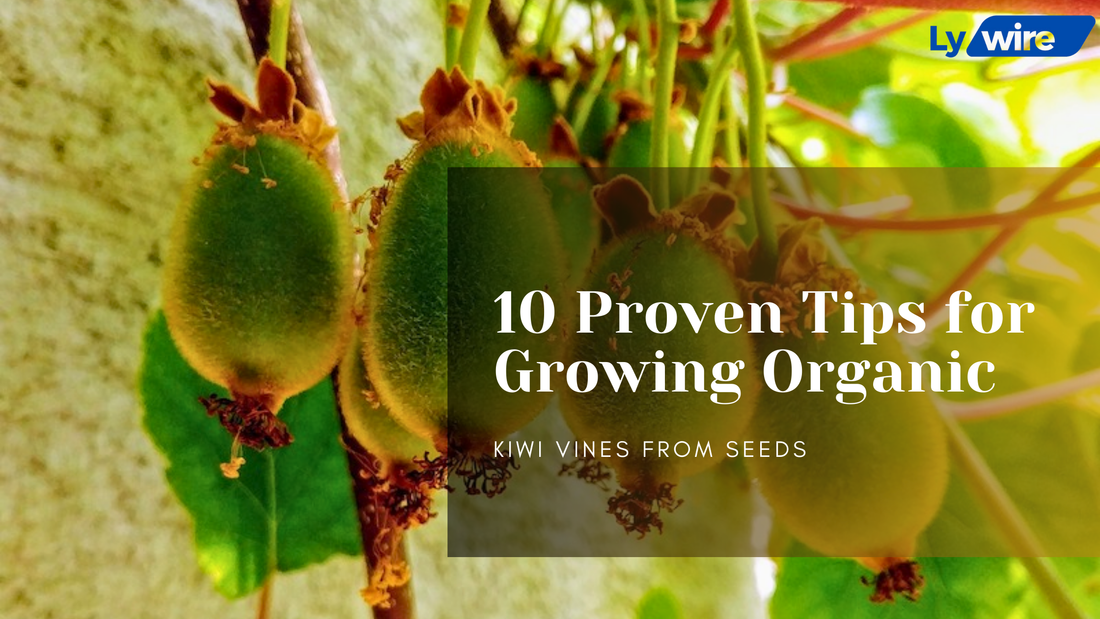
Kiwis are not only a delicious and nutritious fruit but also a rewarding plant to grow in your home garden. While growing kiwi vines from seeds requires patience and care, the process can be incredibly fulfilling. Follow these ten proven tips to cultivate healthy, organic kiwi vines right from seeds.
1. Choose High-Quality, Organic Kiwi Seeds
To start your kiwi-growing journey, select a ripe, organic kiwi fruit. Organic fruits are free from harmful chemicals and pesticides, ensuring healthier seeds. Scoop out the seeds from the pulp and rinse them thoroughly to remove any remaining fruit residue. You can use a blender with water to separate the seeds easily.
2. Germinate the Seeds Properly
Kiwi seeds need proper germination to sprout successfully. Use one of these methods:
- Spread the seeds on a damp paper towel, place it in a ziplock bag, and store it in a warm spot.
- Sow the seeds in moist sand or well-drained potting mix and cover them lightly with plastic wrap.
Seeds typically germinate within two weeks if kept warm and moist.

3. Provide Ideal Growing Conditions
Kiwi vines thrive in sunny, sheltered spots but can tolerate partial shade. However, less sunlight may result in reduced fruit production. Ensure the area is free from frost-prone microclimates, as frost can damage young plants after dormancy
4. Use Well-Drained, Fertile Soil
Kiwis require slightly acidic soil (pH 5.5–7) that is rich in organic matter. Before planting, prepare the soil by adding compost or well-rotted manure to improve fertility and drainage. Avoid waterlogged soil, as kiwi roots are susceptible to rot.

5. Start Indoors Before Transplanting
Once your seeds sprout, transfer them into small pots filled with well-draining potting mix. Keep the pots on a warm windowsill or in a greenhouse for 3–4 months until the seedlings are strong enough to be transplanted outdoors.
6. Space Your Plants Adequately
Kiwi vines are vigorous growers and need plenty of space to spread. When planting outdoors, space the vines at least 10 feet apart to allow proper air circulation and growth.
7. Train Your Vines on a Sturdy Support System
As climbing plants, kiwi vines need strong support structures like trellises, pergolas, or T-bar systems. Train the main trunk vertically using stakes or bamboo poles to encourage upward growth before allowing lateral branches to spread.

8. Ensure Proper Pollination
Most kiwi varieties require both male and female plants for fruit production. A single male plant can pollinate up to 8–10 female plants. If you’re growing kiwis for fruit rather than ornamental purposes, ensure you have both genders unless you opt for self-pollinating varieties.
9. Prune Regularly for Healthy Growth
Pruning is essential to maintain vine health and maximize fruit yield:
- Winter Pruning: Remove up to one-third of old branches close to the main stem.
- Summer Pruning: Pinch back excessive growth to focus energy on fruit production.
- Regular pruning also prevents overcrowding and improves air circulation.

10. Water and Mulch Consistently
Kiwis need consistent watering during their growing season but dislike soggy roots. Use mulch around the base of the plant (but not touching the stem) to retain moisture and suppress weeds. During hot weather, increase watering frequency.
Bonus Tips for Success
Grow Kiwis in Pots
If you have limited space, kiwis grow well in large containers (at least 40 gallons). Use a similar approach as outdoor planting but ensure proper drainage16.
Be Patient
Kiwi vines take time to mature; expect your first fruits after 3–7 years of growth, depending on conditions and care. While waiting, enjoy their lush foliage and beautiful flowers.
Growing organic kiwi vines from seeds is a long-term commitment but immensely rewarding when you harvest your first fruits. By following these ten tips, you’ll set yourself up for success in cultivating vibrant kiwi plants that thrive year after year!

